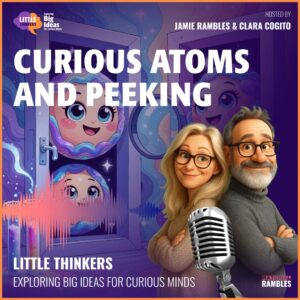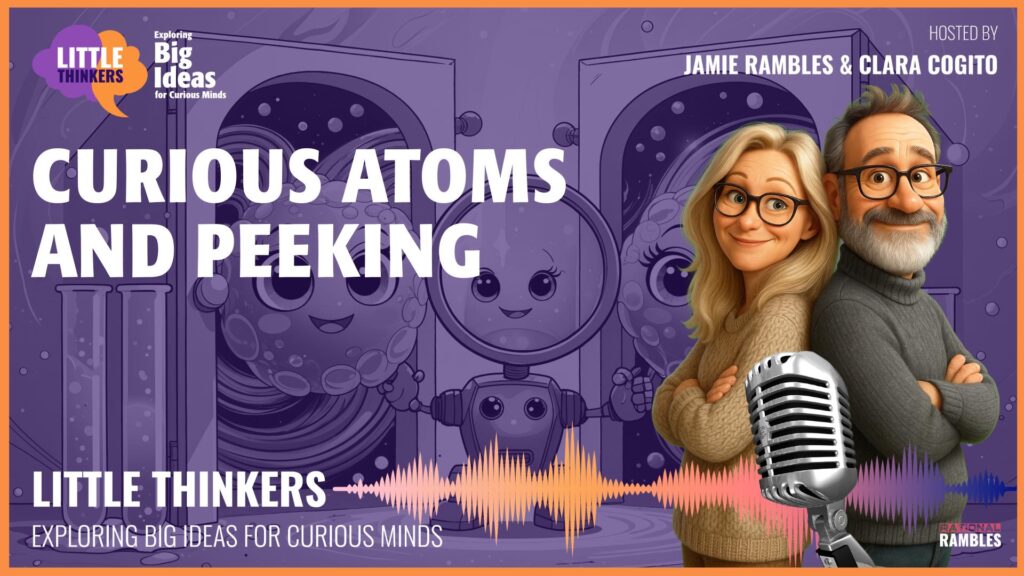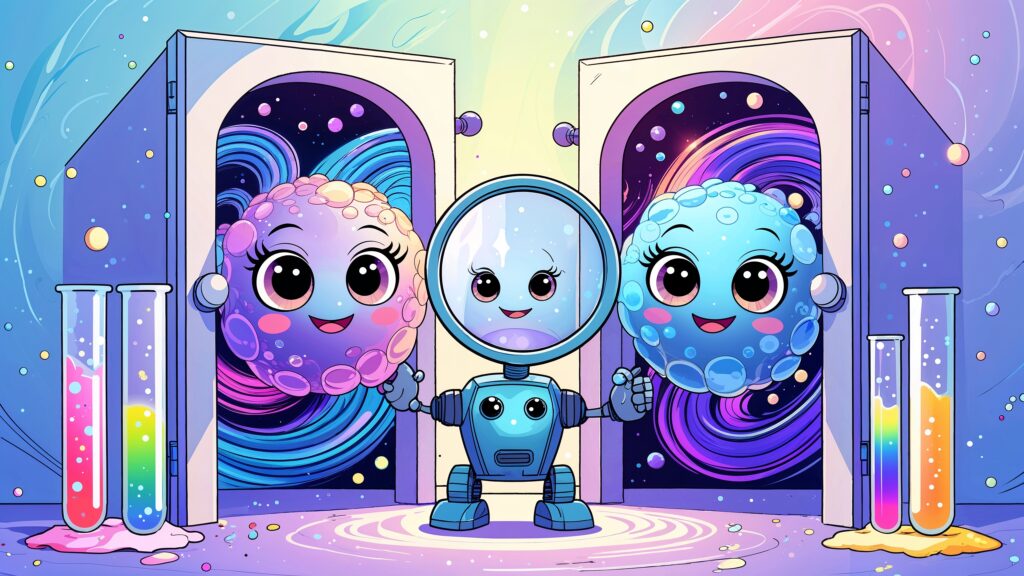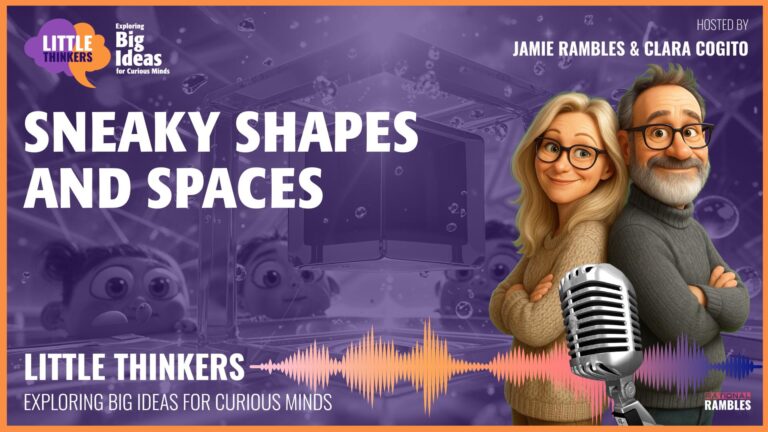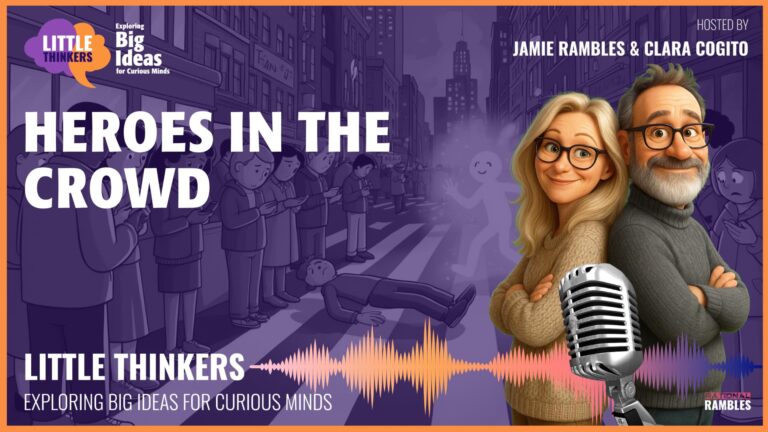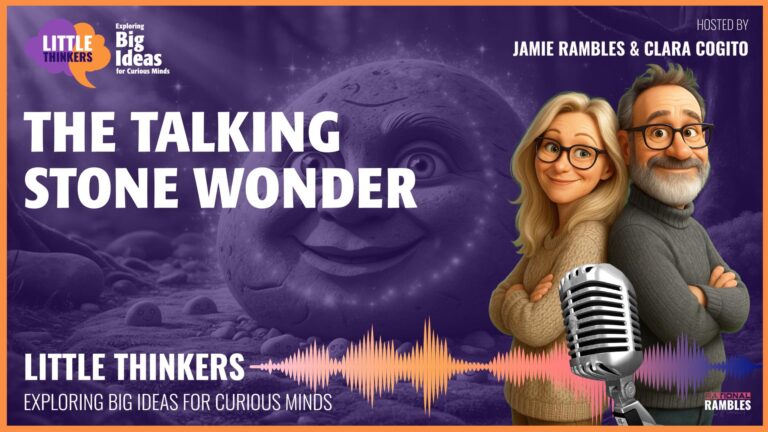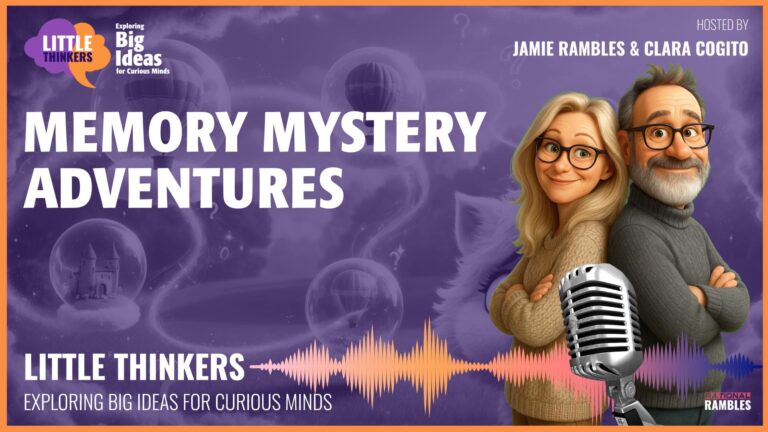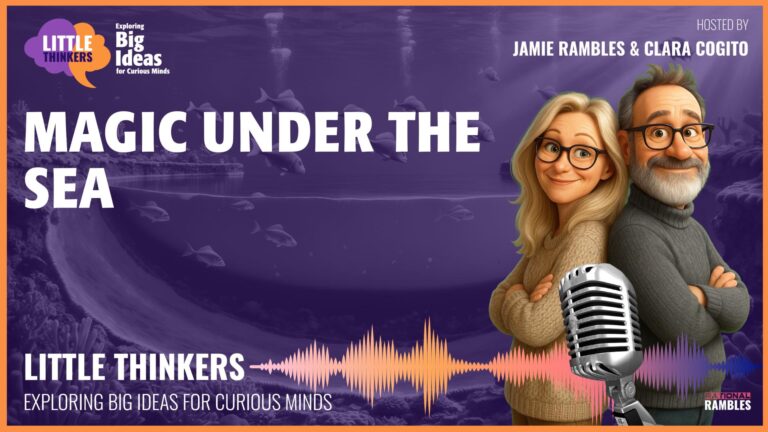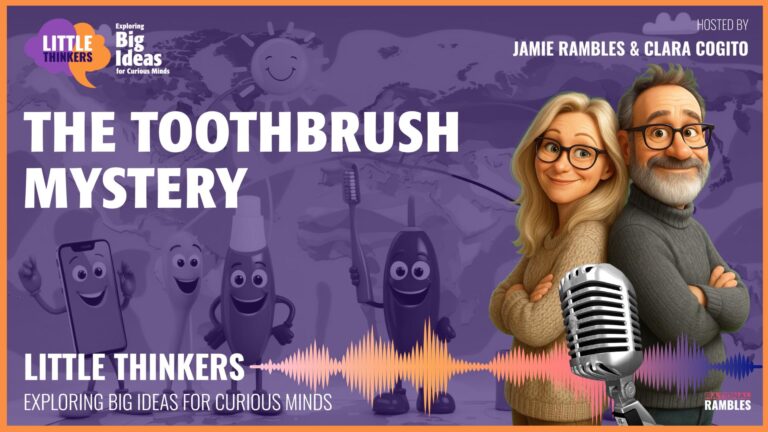The Amazing Peek-a-Boo Particles: How Things Change When We Look at Them!
The Tiniest Hide-and-Seek Game in the Universe
Have you ever played peek-a-boo with a baby? Cover your eyes and the baby thinks you’ve disappeared! Uncover them and—surprise!—you’re back! Well, get ready for something mind-boggling: the tiniest bits of our world actually DO play peek-a-boo with us!
These super tiny things—called quantum particles (that means “really, really small bits”)—actually behave differently when someone is watching them versus when no one is looking. It’s like they’re playing the world’s smallest game of hide-and-seek with scientists!
Meet the Magical Tiny Things
Everything in our world—your toys, your books, even you—is made up of incredibly small things called atoms. And atoms are made of even smaller particles. These particles are so teeny-tiny that you’d need a bazillion magnifying glasses to see them!
But here’s the AMAZING part: these particles don’t always act like normal objects. Your teddy bear can only be in one place at a time, right? If your teddy is on your bed, it can’t also be in your toybox at the same time.
But quantum particles can do something magical—they can be in two places AT THE SAME TIME! That is, until someone looks at them…
Wacky Fact Alert!
There are more atoms in a single grain of sand than there are grains of sand on an entire beach! And each atom is mostly empty space with quantum particles zooming around inside like tiny race cars!
The Doorway Mystery: A Science Adventure
Imagine a wall with two small doorways in it. Let’s call them Door A and Door B. Now imagine throwing tiny balls (our quantum particles) at these doors.
If you threw a regular ball, like a marble, it would go through either Door A or Door B, right? It can’t go through both doors at once—that would be impossible!
But quantum particles don’t play by the same rules as marbles. When nobody is watching, these particles don’t act like solid balls at all. They act like waves—like ripples in a puddle when you drop a pebble in water.
And here’s the super weird part—these waves go through BOTH Door A AND Door B at the SAME TIME! It’s like if you could walk through two different doors at once without splitting yourself in half!
Try This at Home: Wave Hands!
Make a wave with your hand, like you’re saying “hello.” Now try to make your hand-wave go through two doorways at once. You can’t do it because your hand is too big! But if your hand was quantum-sized, it could wiggle through both doors at the same time. Weird, right?
Now You See Me, Now I’m Different!
But wait—it gets even stranger! When scientists try to watch these particles to see which door they go through, something magical happens. The particles suddenly stop acting like waves and start behaving like regular tiny marbles!
It’s as if they know they’re being watched and quickly change how they behave. Imagine if your toys only came to life when you weren’t looking, but whenever you peeked, they quickly froze and pretended to be regular toys!
The Jumping Jellybean Thought Game
Imagine a room full of jellybeans. When the lights are off, these jellybeans bounce everywhere, even floating through walls! But the VERY INSTANT you turn on the light—FREEZE! They all stop and fall to the floor like regular candy. Turn the light back off? They start jumping and floating again!
That’s exactly how quantum particles behave. It’s like they’re having a secret party until someone turns on the lights!
How Do Scientists Know This Stuff?
You might be wondering, “If particles change when we look at them, how did scientists ever figure this out?” That’s a super smart question!
Scientists are very clever. They did an experiment called the “double-slit experiment.” Instead of watching which doorway the particles went through, they looked at where the particles landed on the other side.
It’s like finding footprints in mud to figure out where someone walked, instead of actually catching them walking!
When scientists weren’t watching the doorways, the pattern on the wall looked like wave splashes overlapping—proving the particles went through BOTH doorways as waves!
But when they set up detectors to watch which doorway each particle went through, the pattern changed completely! It looked like two separate piles—as if the particles had only gone through one doorway or the other, like regular tiny marbles!
But WHY Do They Change?
Why do particles act differently when observed? Scientists think it’s because to see something that small, we have to shine light on it or use special tools. And that light or those tools bump into the particles and change how they behave.
It’s like if you’re sneaking to the cookie jar trying not to make noise, but then mom turns on the light and—BUSTED! You have to change what you’re doing!
Some scientists even wonder if it’s not just the tools or the light, but maybe the particles actually change because a conscious mind—a person—is paying attention to them! That’s a pretty wild idea!
People-Watching vs. Particle-Watching
Have you noticed that people act differently when they know they’re being watched? Like when your teacher is looking, you might sit extra straight and raise your hand higher! Or when a parent is watching, you might eat all your vegetables without complaining!
This is called the “observer effect” for people. But with people, we CHOOSE to behave differently. The quantum particles don’t have brains to decide with—they just follow the strange rules of the quantum world!
Are YOU a Quantum Being?
Since your body is made of trillions of atoms with quantum particles inside them, does that mean you’re partly made of these magical quantum thingies that can be in two places at once?
YES! Isn’t that an amazing thought? Everything—you, your friends, cookies, rocket ships, and dinosaur fossils—everything is made of these particles that follow quantum rules!
But don’t get too excited—you can’t walk through walls even when nobody’s looking. When billions of particles come together to make something big like a person, these quantum effects mostly cancel out. Scientists call this “decoherence” (dee-ko-HEER-ents)—which means the quantum weirdness fades away in big objects.
Quantum Powers in Real Life
Scientists aren’t just learning about quantum particles for fun—they’re using these discoveries to build amazing new technology!
They’re creating quantum computers that use these weird quantum behaviors to solve super complicated problems. Regular computers calculate one thing at a time, but quantum computers can calculate many things at once—just like how particles can be in many places at once!
Scientists have even done quantum teleportation with tiny particles! It’s not exactly like in space movies—they’re not beaming people around yet—but they can transfer the pattern of one particle to another particle far away. It’s still SUPER cool!
Big Questions Without Answers (Yet!)
There are still many mysteries about quantum particles that even the smartest scientists haven’t figured out yet.
If particles change when observed, what happens if they’re observed by another particle? Does a rock “observe” the particles next to it? Or does it take a conscious mind to make the quantum magic happen?
Scientists are still debating these questions! That means there are still BIG discoveries waiting for someone to find them. Maybe YOU will grow up to solve these quantum puzzles!
Quantum Questions for Your Brain
- If you had quantum powers for a day and could be in two places at once, where would you go?
- Is the moon still there when nobody’s looking at it?
- What would happen if your toys could be in many places at once like quantum particles?
- If everything is made of quantum particles, why don’t we see quantum weirdness in everyday life?
Be a Quantum Explorer!
Here’s a fun game to try: Close your eyes and imagine you’re a quantum particle. You can be anywhere in your room at once—under the bed, by the window, in the toybox—all at the same time! But when someone looks, you have to pick just one spot!
Every question you ask is like turning on a light in a dark room—it helps you see things you never noticed before! And sometimes, like with our quantum particles, asking questions changes everything!
Remember—in the quantum world, impossible is just another possibility waiting to be observed! The universe might be even more amazing when nobody’s looking!


